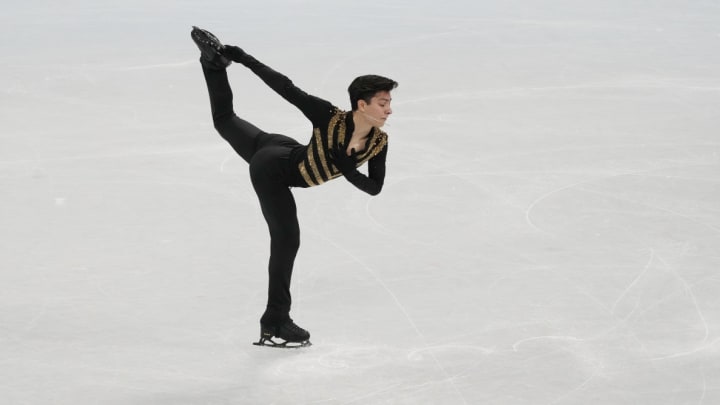Mexico’s Donovan Carrillo Is Living the Olympic Dream

BEIJING — Wearing a grin the size of the rink, Donovan Carrillo wiped away tears and sweat and lamented the only disappointment of his Olympics so far: He had to get off the ice.
“I didn’t want it to end,” he said afterward, still beaming from his 79.69-point performance, a personal best. “I wanted to keep living the Olympic dream.”
Even figure skaters who train in world-class facilities gush about how different the ice feels at the Games; the 22-year-old Carrillo, only the fourth Olympic figure skater in Mexican history, does quadruple toe loops amid grade-schoolers learning to skate at the miniature rink at a shopping mall. So when he got here, his first task was to rewrite his choreography to account for the larger size of an Olympic rink.
In many ways, his situation is outrageous: A Winter Olympian living in subtropical Léon, where the average temperature in January is 59º, practicing at the Ice Sport Center at the Plaza Mayor mall, a few yards from a GameStop and around the corner from a Sears. But he said he will not try to upgrade when he gets home.
“It’s working,” he said. “When something is working, I don’t believe in changing too much.”
Carrillo tried diving and gymnastics as a small child, then picked up skating at 8, initially following his older sister Daphne to lessons and then developing a crush on another child there. The girl quit. Donovan kept skating. When he watched the Vancouver Olympics on TV at 10, he decided to make it there himself. His local rink in Guadalajara closed three years later, so he and his coach, Gregorio Núñez, moved three hours northeast to León.

There was—and is—not much support for Carrillo at home. He trains alongside the best skaters he can find, a handful of 11- to 14-year-old girls. “They are working on triples and double Axels,” he said. A few years ago, he started a crowdfunding website to raise money, which made about $2,400. Eventually the Mexican government began funding him as an elite athlete as well. He also works as an assistant coach at the Ice Sport Center, helping skaters of all ages.
Carrillo is one of just 35 people here representing Latin America, and the only figure skater. He thinks often of what that means.
“It’s really something that motivates me to do my best and to inspire more kids in Latin America and in my country to try to practice winter sports,” he said. “Many people told me during the beginning of my career that this was a crazy dream for a kid, because I always wanted to be at the Olympics, and when I talked about this dream with people, they were always laughing or telling me that it was impossible for a Mexican to qualify, and the only thing that I could do in international events was to [finish in] last place. I never wanted to think like that.”
He skated to a medley of “Black Magic Woman” and “Shake It,” both performed by Santana, because guitarist Carlos Santana is Mexican American. Carrillo wore a black costume, embellished with some 7,000 Swarovski crystals, by Guadalajaran designer Edgar Lozano. (“He gave it to me for free,” Carrillo added happily.) As he exited the ice, Carrillo found the camera and flashed his skate guards, colored like the Mexican flag.
“We have some challenges in Mexico,” he said. “Sometimes people think that the artistic sports are only for women. So that's something I had to fight when I was a kid, because many people at school told me, You’re a girl. … I always skated because it was something that I was enjoying. Something that was making me happy. So I think that's one of the reasons why we don't have many male skaters in my country. And we don't have much infrastructure. I think my performances here are gonna hopefully bring more male skaters into figure skating. That was actually one of my goals, to inspire more people to practice figure skating, because I think many of them could find their passion just like I did.”
Another of his goals was to qualify for the free skate, which the top 24 do. He achieved that Tuesday. Even after his exciting showing, he will not win a medal here. But he will get to do something wonderful: He will get to skate on Olympic ice again.
More Olympics Coverage:
